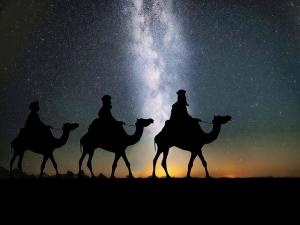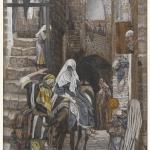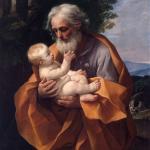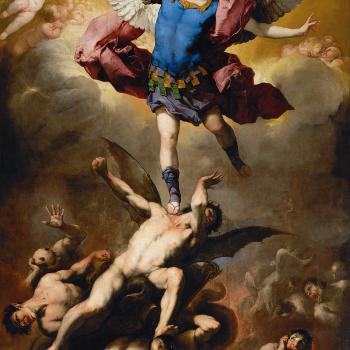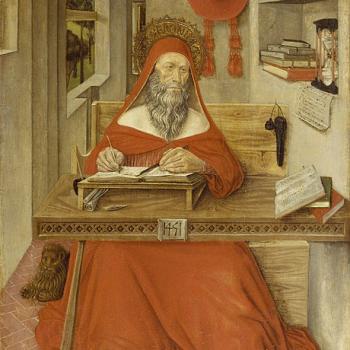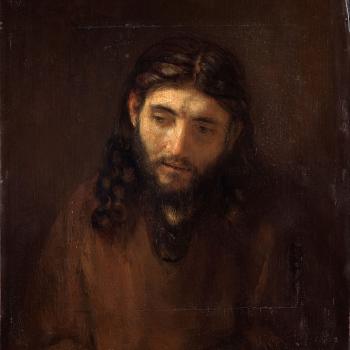Atheist anti-theist and “philosopher” Jonathan M. S. Pearce runs the blog, A Tippling Philosopher. He has encouraged me to visit his site and offer critiques, and wrote under a post dated 12-14-21: “I even need to thank the naysayers. Some of them have put up with a lot of robust pushback and still they come. Bravery or stupidity – it’s a fine line. But they are committed, and there is something to be said for taking that commitment into the lion’s den. Dave, you are welcome at my new place. Come challenge me. . . . thanks for your critiques of my pieces. Sorry I couldn’t get to more of them.” This echoes his words about me in a post dated 7-20-17, where he said, “well done . . . for coming here and suffering the slings and arrows of atheists’ wrath. . . . I commend him for getting involved and defending himself. Goodonya, mate.”
Under a post dated 1-27-22, he stated: “I do welcome disagreements because I don’t want [my blog] to [be] just an echo chamber. . . . [S]omeone like Armstrong does give me ammunition for some of my pieces!” Likewise, on 3-18-14 he proclaimed: “Dissenting views are utterly vital to being sure that you are warranted in your own beliefs and views.” And on 7-20-17: “I put my ideas and theories about the world out there for people to criticise. . . . I want to make damned sure that they are warranted. I can’t stand the idea that I could . . . believe something that is properly unwarranted. . . . What’s the point in self-delusion? . . . I put something out there, people attack it, and if it still stands, it’s pretty robust and I am happy to hold it. If not, I adapt and change my views accordingly.”
I’m delighted to oblige his wish to receive critiques and dissenting views! The rarity of his counter-replies, however, is an oddity and curiosity in light of this desire. He wrote, for example, on 11-22-19: “[I can’t be] someone who genuinely is not interested in finding out the truth about philosophy, God and everything. If I come up against any point that is even remotely problematic to my worldview, I feel the absolute necessity to bottom it out. I need to reconcile at least something; I have work to do. I cannot simply leave it as it is. . . . I would simply have to counter the arguments, or change my position.” Whatever; this hasn’t been my experience with him; only in short and infrequent spurts. I continue to offer them in any event, because they aren’t just for his sake.
Here’s what he thinks (by the way) of Jesus: “The Jesus as reported in the Gospels is so far removed from the real and historical figure of Jesus, overlaid with myth, story-telling, propaganda and evangelist agenda, that the end result is synonymous with myth. . . . I’d take mythicism over Christianity any day. And they call mythicists fringe as if the position is absurd? Now that’s crazy.” (8-2-14)
Jonathan’s words will be in blue.
*****
This is a reply to a portion of Jonathan’s article, “The hoops the Christian has to jump through to believe the Nativity” (10-29-12):
In my book, The Nativity: A Critical Examination, I think I give ample evidence that allows one to conclude that the historicity of the nativity accounts is sorely and surely challenged. All of the aspects and claims, that is. There are problems, for sure, if one accepts that some claims are false but others are true. But the simple fact of the matter is that all of the claims are highly questionable.
Here are the hoops that a Christian must jump through. They are flaming hoops, and the Christian can do nothing to avoid being burnt, it seems. From my book:
In order for the Christian who believes that both accounts are factually true to uphold that faithful decree, the following steps must take place. The believer must: . . .
• Believe that there is (and provide it) a reasonable explanation as to why each Gospel provides different first witnesses (shepherds and magi) without any mention of the other witnesses.
This is an easy one, and it is remarkable to me that Jonathan has made such a basic error as regards the Gospel accounts. First of all, we find the usual sloppy logical thinking in atheist attacks on the Bible. Neither Matthew nor Luke claim that the shepherds or the wise men (magi) were the “first” to witness the baby Jesus. That’s an invention that Jonathan somehow came up with (who knows how?).
And this is a key factor in determining whether an alleged “contradiction” is present. Let me elaborate a bit if I may. If Matthew had said that the wise men were the “first” to visit baby Jesus and Luke said that the shepherds were the ‘first” to do so, then that would have been a true, clear contradiction. But of course neither account says any such thing.
This is so obvious that Jonathan himself even hosted Bible skeptic Bart Ehrman on his blog, making exactly the same point I just made, and contradicting his own:
Of course some of the differences are simply … differences, not “contradictions.” As an obvious example, the fact that Luke mentions the shepherds but not the magi (wise men) and that Matthew mentions the magi but not the shepherds is not a contradiction. If both groups visited the infant Jesus, then Luke mentioned one group and Matthew the other: no contradiction. (Ehrman on the Nativity, 10-29-13)
Somehow, Ehrman avoided the (what did Jonathan call it?) “flaming hoops” and he — inexplicably — managed to navigate this extraordinarily difficult logical conundrum without being “burnt.”
Right after Luke reports that Mary gave birth to Jesus (Lk 2:7), it’s reported that angels inform the shepherds of the birth of Jesus on that very night (Lk 2:8-14). Then the shepherds determined to go see baby Jesus, and indeed did so (Lk 2:15-16). We know that this was the night of Jesus’ birth, complete with his lying in the famous “manger” (Lk 2:7).
Nothing is said about their being the first visitors. They may have been, but we can’t know for sure from the text. They could have been the first or the fifth, or the only ones on that night. From the text we can’t determine those things. And there is no imaginary obligation for a text to mention any or all other visitors too. All we know for sure is that they visited shortly after He was born.
With the wise men (Mt 2:1-11), what Jonathan appears unaware of is that they didn’t visit on the night of Jesus’ birth. No doubt he would appeal to Matthew 2:1: “Now when Jesus was born in Bethlehem of Judea in the days of Herod the king, behold, wise men from the East came to Jerusalem, . . . ” (RSV). But this is one of the thousands of cases in the Bible where the intended meaning was not literal. Many Bible translations bring out more clearly the actual intent, that the incidents about to be recorded were some time after Jesus’ birth, not at the time of His birth:
CSB / CEB / EHV / ESV / ESVUK / HCSB / LEB / MEV / Mounce After Jesus was born in Bethlehem . . .
Darby / DNLT Now Jesus having been born in Bethlehem . . .
ERV Jesus was born in the town of Bethlehem in Judea during the time when Herod was king. After Jesus was born, some wise men from the east came to Jerusalem.
GW Jesus was born in Bethlehem in Judea when Herod was king. After Jesus’ birth wise men from the east arrived in Jerusalem.*GNT Jesus was born in the town of Bethlehem in Judea, during the time when Herod was king. Soon afterward, some men who studied the stars came from the East to Jerusalem
ICB . . . After Jesus was born, some wise men from the east came to Jerusalem.
*
ISV / NCB After Jesus had been born in Bethlehem . . .*Phillips Jesus was born in Bethlehem, in Judea, in the days when Herod was king of the province. Not long after his birth there arrived from the east a party of astrologers*MSG / NASB / NET / NIV / NKJV After Jesus was born in Bethlehem . . . [source]
Weymouth / Goodspeed Now after the birth of Jesus . . .*NEB / REB . . . After his birth . . .*NRSV . . . after Jesus was born . . .*Barclay When Jesus had been born . . .*Wuest Now, Jesus having been born . . .
When the magi stopped by, Jesus was a toddler. The word for child in Matthew 2:8-9 is paidion (Strong’s word #3813): defined as “a young child . . . properly, a child under training; the diminutive form of 3816 /país (“child”). . . . implies a younger child (perhaps seven years old or younger). Some scholars apply 3816 (país) to a son or daughter up to 20 years old.”
“Babe” on the other hand (Lk 2:12, 16 in RSV and KJV) is Strong’s word #1025, brephos: which means: “an unborn or a newborn child” and is used of children in the womb in Luke 1:41, 44. In Luke 2, it’s the day of Jesus’ birth (Lk 2:7, 11). So the use of “babe” (2:12, 16) and “child” (2:17) in English (RSV) obviously includes the meaning here of “newborn.” Commentators generally believe He was two years old or younger when the wise men visited, but in any event, not a newborn.
But Jonathan cites one Julian Haydon on his blog, making the same dumb mistake he made, including noting that “it is something I brought up in my last book” [on the Nativity]:
[T]he wise men knew to follow it [Star of Bethlehem] to find the baby Jesus, . . . Why didn’t the “miracle” of the star lead the wise men to baby Jesus in the first place . . .? (Slaughter of the innocents, 11-10-13, my italics)
Two years later, Jonathan was still trotting out this falsehood on his blog:
Herod is not likely to have troubled himself with the newborn . . . On pain of death, those Magi would have led him to the baby. . . . In fact, unless God only magically made the star visible to the Magi, the whole of Jerusalem could have gone to see the newborn Messiah; . . . (Response to Triablogue’s Jason Engwer on Nativity Accounts (Part 1), 12-20-14; my italics)
We know that this error is also present in his 2012 book, The Nativity: A Critical Examination because he cites part of it (p. 146) in a blog post dated 12-14-14:
[W]hy would catching a newborn and murdering this newborn, thereby forcing him to murder many other infants, be something that such an old king would bother to do? (my italics)
The magi visit a “house” (Mt 2:11), not a baby in a “manger” (Lk 2:7, 12, 16), in a place which was, in fact, very much a cave (I’ve been there). There are no angels (Lk 2:9-10, 13-15), shepherds (Lk 2:8, 15-18), or animals are in sight. The star of Bethlehem is a factor in Matthew’s account only. Luke never mentions it. The picture of the star of Bethlehem shining down on baby Jesus (surprisingly enough) is not biblical at all. Scholars believe that Jesus was possibly as old as two years old, based on Matthew 2:16 (RSV):
Then Herod, when he saw that he had been tricked by the wise men, was in a furious rage, and he sent and killed all the male children in Bethlehem and in all that region who were two years old or under, according to the time which he had ascertained from the wise men.
Herod felt “tricked” because they had departed the country by then (2:12-13). What he “ascertained from the wise men” was that Jesus was up to two years old. See also 2:7: “Herod summoned the wise men secretly and ascertained from them what time the star appeared”. I think they may have said He was a year old, and that Herod then ordered all children under two to be killed, to be sure He killed the Messiah, based on His estimated age given to him by the magi.
Since these are two completely separate events and visitations, Jonathan’s “difficulty” and alleged “contradiction” vanishes.
***
Practical Matters: Perhaps some of my 4,000+ free online articles (the most comprehensive “one-stop” Catholic apologetics site) or fifty books have helped you (by God’s grace) to decide to become Catholic or to return to the Church, or better understand some doctrines and why we believe them.
Or you may believe my work is worthy to support for the purpose of apologetics and evangelism in general. If so, please seriously consider a much-needed financial contribution. I’m always in need of more funds: especially monthly support. “The laborer is worthy of his wages” (1 Tim 5:18, NKJV). 1 December 2021 was my 20th anniversary as a full-time Catholic apologist, and February 2022 marked the 25th anniversary of my blog.
PayPal donations are the easiest: just send to my email address: [email protected]. You’ll see the term “Catholic Used Book Service”, which is my old side-business. To learn about the different methods of contributing, including 100% tax deduction, etc., see my page: About Catholic Apologist Dave Armstrong / Donation Information. Thanks a million from the bottom of my heart!
***
Photo credit: 27707 (1-20-16) [Pixabay / Pixabay License]
***
Summary: Atheist JMS Pearce claims that the NT contradictorily teaches that both the shepherds & wise men first visited baby Jesus. In fact, the latter visited 1-2 years later.


